The images changing how we see oceans
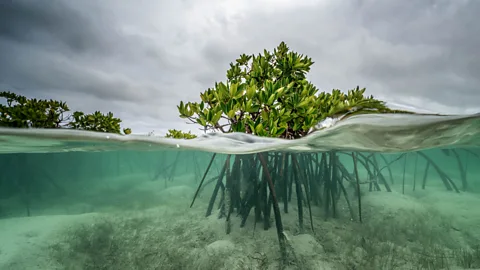 Cristina Mittermeier/SeaLegacy
Cristina Mittermeier/SeaLegacyAs the COP26 summit comes to a close, Graeme Green highlights photographers around the world whose images reveal how climate change is affecting our oceans.
The simple act of opening and closing a camera shutter has the power to capture and preserve a moment. Whether it's war victims fleeing burning buildings, a World Cup-winning goal or a protestor smashing a window, images can be loaded with information that tells the story of a specific location and situation in a specific fragment of time. Often, photos represent less than a second of life on Earth. The camera I work with, for example, can capture one 8000th of a second, fast enough to show the wings of a hummingbird in sharp definition.
But how can you photograph something as slow as a vast ice sheet shrinking across the decades or the gradual warming of the oceans? Climate change and the connected biodiversity crisis present humans with an existential threat, the most challenging issue of our times. The Earth has warmed by more than 1C since the Industrial Revolution, the last decade the hottest on record. Oceans' temperatures have risen in the last 50 years by around 0.5C, the rate of warming increasing. Antarctica loses around 130 gigatons of ice per year. But how can an isolated fragment of time tell the story of this almost imperceptible process of incremental change?
"Climate change is difficult to photograph because it's like a slow-moving tsunami," says Mexican photographer Cristina Mittermeier. "It's a process, rather than an event. Perhaps that's why it's taken humanity so long to make bolder decisions to rethink our energy, development and sustainability models. These consequences have crept up on us. Climate photography's a process of finding those moments where people can reflect on the real consequences."
The term "global warming" was popularised by the US scientist Wallace Broecker as far back as 1975. Despite the evidence and scientific consensus, there remains some resistance to the inconvenient truth that climate change is an issue at all, the waters deliberately muddied by vested interests. Photography plays a vital role in providing evidence of the changes happening on our planet. US photographer James Balog's Extreme Ice Survey, for example, a series of time-lapse cameras in Greenland, Iceland, Antarctica and other locations, has shown incontrovertible proof of the world's disappearing glaciers.
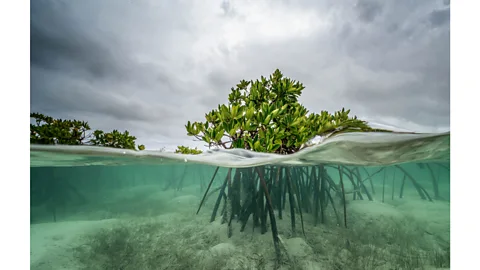 Cristina Mittermeier/SeaLegacy
Cristina Mittermeier/SeaLegacyPhotos can be more effective than facts alone in reaching people. "When I was a scientist, I thought I could compel people to feel the urgency through science, by showing them data and graphs," says Mittermeier, who has a degree in Biochemical Engineering in Marine Sciences. "I quickly realised most people don't speak 'science'. But when you show somebody a photo or film, you can appeal to more human emotions."
Along with partner Paul Nicklen, Mittermeier is the co-founder of SeaLegacy, an organisation promoting the protection of the world's oceans through visual storytelling, and Only One, an environmental conservation platform. "As photographers, we can only interpret and document the symptoms and the consequences of climate change," she explains. "What happens to ecosystems and wildlife as our planet's climate become more unstable isn't an easy thing to photograph but capturing that drama is an important way to keep the public engaged with the reality of this crisis."
With COP26, the UN Climate Change Conference, now closing, there are calls for decisive action from global leaders. Photography has been crucial in showing the consequences and making the case for change. "Hurricanes and wildfires around the world are the consequence of a warmer ocean and they're challenging to photograph," says Mittermeier. "Focusing on the aftermath has become an everyday occurrence and we're almost numb to the destruction. We need to find more creative ways to keep bringing the magnitude of destruction, displacement and suffering home to those who are still sheltered from the worst effects. We have to challenge the desire to make our reality feel comfortable and safe. Deep inside, even the worst deniers know it isn't and that we're running out of time."
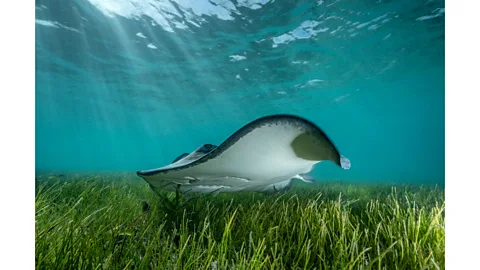 Cristina Mittermeier/SeaLegacy
Cristina Mittermeier/SeaLegacyClimate change is an all-encompassing issue, from floods and fires to desertification and drought, but oceans are of central importance. "I could've never imagined I'd see the degree of degradation I've seen in these past four decades," says the US photographer, filmmaker and National Geographic Fellow Brian Skerry, who's been exploring the oceans since the late 1970s. "We've systematically removed so many animals from the ocean through commercial industrialised overfishing. We continue to kill in excess of 100 million sharks every year. We're dumping annually into the ocean about 18 billion pounds of plastic, not to mention toxins, heavy metals, PCBs…"
Accelerating change
Skerry has photographed the impacts of climate change, including the decline of sea ice in Arctic Canada, which has led to high mortality rates of seal pups. But he's also witnessed changes closer to home, including the decline of biodiversity in the Gulf of Maine. "I'm personally seeing vanishing species," he explains. "Many things I used to see – small soft corals, wold fish, invertebrates like basket stars – we just don't see any more because of these warming temperatures. We're seeing a lot of native species decline and invasive species moving in, which creates an imbalance. Around the world, I'm also seeing acidification and the eroding of corals. It's happening in dramatic ways in my lifetime, and the acceleration seems to be happening."
Earlier this year, Skerry won an Emmy award for Secrets of The Whales, a Disney+ documentary series filmed in more than 20 locations over three years, with a book of the same name featuring his underwater photography of the world's largest mammals. "I believe climate change is having an impact on whales, primarily the food they eat," he says. "Many species they eat aren't being found in the normal places, so whales are having to migrate to new locations, to travel further and expand greater energy to get to places they might find food. One of the most endangered species of whale in the world, the North Atlantic right whale, feeds exclusively on copepods (tiny little creatures that are a baseline source of protein). Their range used to be the Bay of Fundy in Canada. Now they're being seen in the Gulf of St Lawrence, much further north. Whales need to go much further north and the copepods aren't as healthy as they used to be, which is likely to have a long-term impact on right whales, where they don't get as much nutrition."
 Brian Skerry
Brian SkerryCommunicating the damage we're causing to the world's oceans takes many perspectives, from eye-to-eye with a humpback to a bird's eye view of a landscape. "Aerials are an uncommon point of view for most people," says Spanish photographer Daniel Beltrá, known for his large-scale photographs shot from the air. "It gives a sense of perspective and highlights the vast scale of the problems. Aerial images can also be very abstract and disorienting – a puzzle to be solved. Through that I try to lure the viewers to reflect on issues that concern me."
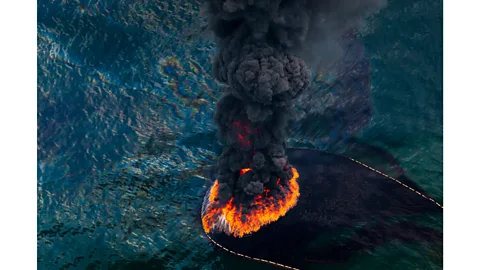 Daniel Beltrá
Daniel BeltráBeltrá photographed the 2010 Deepwater Horizon oil spill in the Gulf of Mexico and covers environmental issues from the Amazon to Antarctica. "It's very difficult to see extreme changes unless you have a deep knowledge of a location," he says. "In the Amazon, deforestation doesn't happen in a single defined front – it's a patchwork of clearings and fires spread across thousands of kilometres. Similarly in the Poles, the changes are over many fronts. Photography can help translate hard-to-grasp scientific concepts into images that are more accessible. An informed public will be more likely to press politicians and business executives that can bring long overdue changes that are much needed."
Australian photographer Ted Grambeau is known for his work on surfing adventures in remote locations, including commercial projects for brands such as Rip Curl, Patagonia and Apple. But for the last 10 years, he's been working on SeaLevel, a series of abstract images of light hitting the surface of the ocean. "I felt it somewhat ironic, having spent a lifetime immersed in the ocean, that I personally couldn't perceive first-hand any change in the sea level due to climate change," he explains. "Though I firmly believed in the science, the changes are so subtle and incremental, they're almost imperceptible."
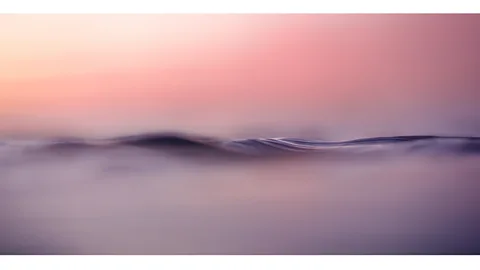 Ted Grambeau
Ted GrambeauGrambeau plans to expand the series with pictures from small Pacific and Indian Ocean islands threatened by rising sea levels. "Using art to create awareness about climate change allows people time to pause and reflect on the issue," he says. "Documentaries can be full of facts and figures. Art's a more slowly digested form of engagement. My aim is to raise awareness of the gravity of the situation with climate change and the silent rise in our sea level."
The more people are inspired by photography to think about the climate and our planet, the better. "This is a pivotal moment in time," says Skerry. "Many of the goals for COP26 are noble goals: to secure global net zero by mid-century and keep one degree within reach. I'd also love to see them protect communities and natural habitats. We're seeing mass extinctions and biodiversity loss. The ocean is dying a death from a thousand cuts. I'd love to see a commitment to protecting 30% of Earth's natural habitats by 2030, including oceans."
"Climate stability can be achieved by ocean conservation," he adds. "We know Marine Protected Areas mitigate climate damage – the ocean is the greatest carbon sink on Earth. The time for talk and false pledges has passed. We have to take serious action and we have to do it now."
Creating photos that provoke action and drive change is a motivation that unites many photographers. What's striking is how different their methods are to elicit a response from viewers; the work of Beltrá and Grambeau, for example, is poles apart in style and subject matter. Photography, like every art form, is incredibly personal, each photographer's choice of subject, when and where to press the shutter, and their creative approach (composition, use of light, length of exposure…) unique to them. As these photographers demonstrate, there are many ways to communicate with people, whether close-ups of marine creatures, overviews of landscapes or insights into the lives of people impacted by flooding or fires, or from hard-hitting journalism to thought-provoking abstracts. The support for urgent action on climate change from people around the world suggests these many varied photos are helping to make an impact.
That often means reaching people on an emotional level, and not just with brutal truths and hard-hitting depictions of death and destruction. Mittermeier is determined to show people the "beauty and majesty" of the natural world. Images by her, by Skerry and other nature photographers take viewers into remote, wintry wildernesses or deep into underwater worlds that few people will get to see in their lifetimes, letting us experience up close the remarkable creatures we share the planet with. Photos of healthy tropical coral gardens filled with colourful fish or a spectacular gathering of giant whales remind us of the beauty, diversity and wonder of the natural world, a world well worth working to protect.
And if you liked this story, sign up for the weekly bbc.com features newsletter, called The Essential List. A handpicked selection of stories from BBC Future, Culture, Worklife and Travel, delivered to your inbox every Friday.
